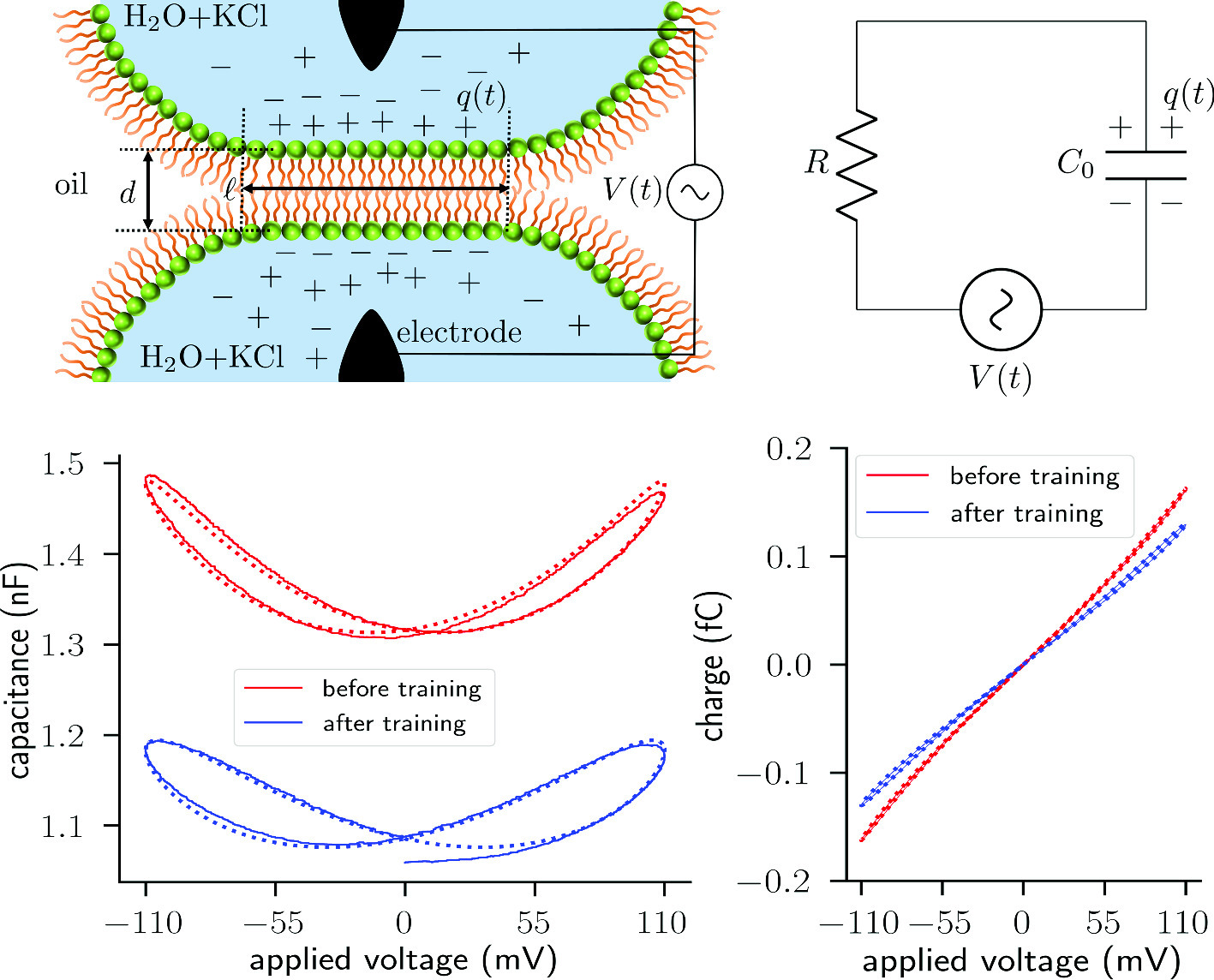https://doi.org/10.1140/epje/s10189-023-00391-7
Regular Article - Living Systems
Physical insights into biological memory using phospholipid membranes
1
Department of Physics and Astronomy, University of Tennessee, 37996, Knoxville, TN, USA
2
Shull Wollan Center, Oak Ridge National Laboratory, 37831, Oak Ridge, TN, USA
3
Center for Nanophase Materials Sciences, Oak Ridge National Laboratory, 37831, Oak Ridge, TN, USA
4
Neutron Scattering Division, Oak Ridge National Laboratory, 37831, Oak Ridge, TN, USA
5
Department of Earth, Environment, and Physics, Worcester State University, 01602, Worcester, MA, USA
a
dbolmato@utk.edu
b
colliercp@ornl.gov
c
katsarasj@ornl.gov
d
mlavrentovich@worcester.edu
Received:
14
October
2023
Accepted:
29
November
2023
Published online:
11
January
2024
Electrical signals may propagate along neuronal membranes in the brain, thus enabling communication between nerve cells. In doing so, lipid bilayers, fundamental scaffolds of all cell membranes, deform and restructure in response to such electrical activity. These changes impact the electromechanical properties of the membrane, which then physically store biological memory. This memory can exist either over a short or long period of time. Traditionally, biological memory is defined by the strengthening or weakening of transmissions between individual neurons. Here, we show that electrical stimulation may also alter the properties of the lipid membrane, thus pointing toward a novel mechanism for memory storage. Furthermore, based on the analysis of existing electrophysiological data, we study molecular mechanisms underlying the long-term potentiation in phospholipid membranes. Finally, we examine possible relationships between the memory capacitive properties of lipid membranes, neuronal learning, and memory.
Copyright comment Springer Nature or its licensor (e.g. a society or other partner) holds exclusive rights to this article under a publishing agreement with the author(s) or other rightsholder(s); author self-archiving of the accepted manuscript version of this article is solely governed by the terms of such publishing agreement and applicable law.
© The Author(s), under exclusive licence to EDP Sciences, SIF and Springer-Verlag GmbH Germany, part of Springer Nature 2024. Springer Nature or its licensor (e.g. a society or other partner) holds exclusive rights to this article under a publishing agreement with the author(s) or other rightsholder(s); author self-archiving of the accepted manuscript version of this article is solely governed by the terms of such publishing agreement and applicable law.





